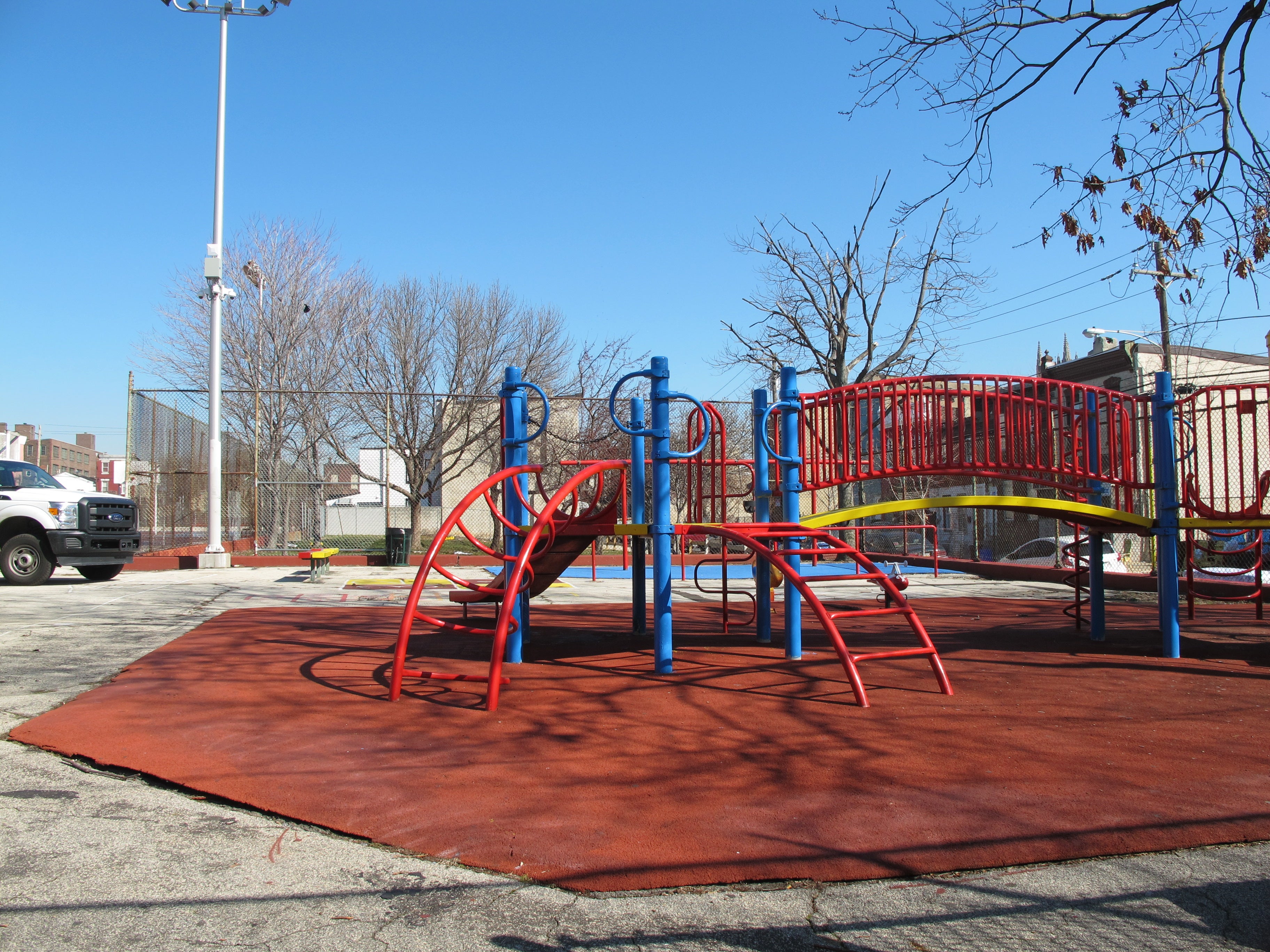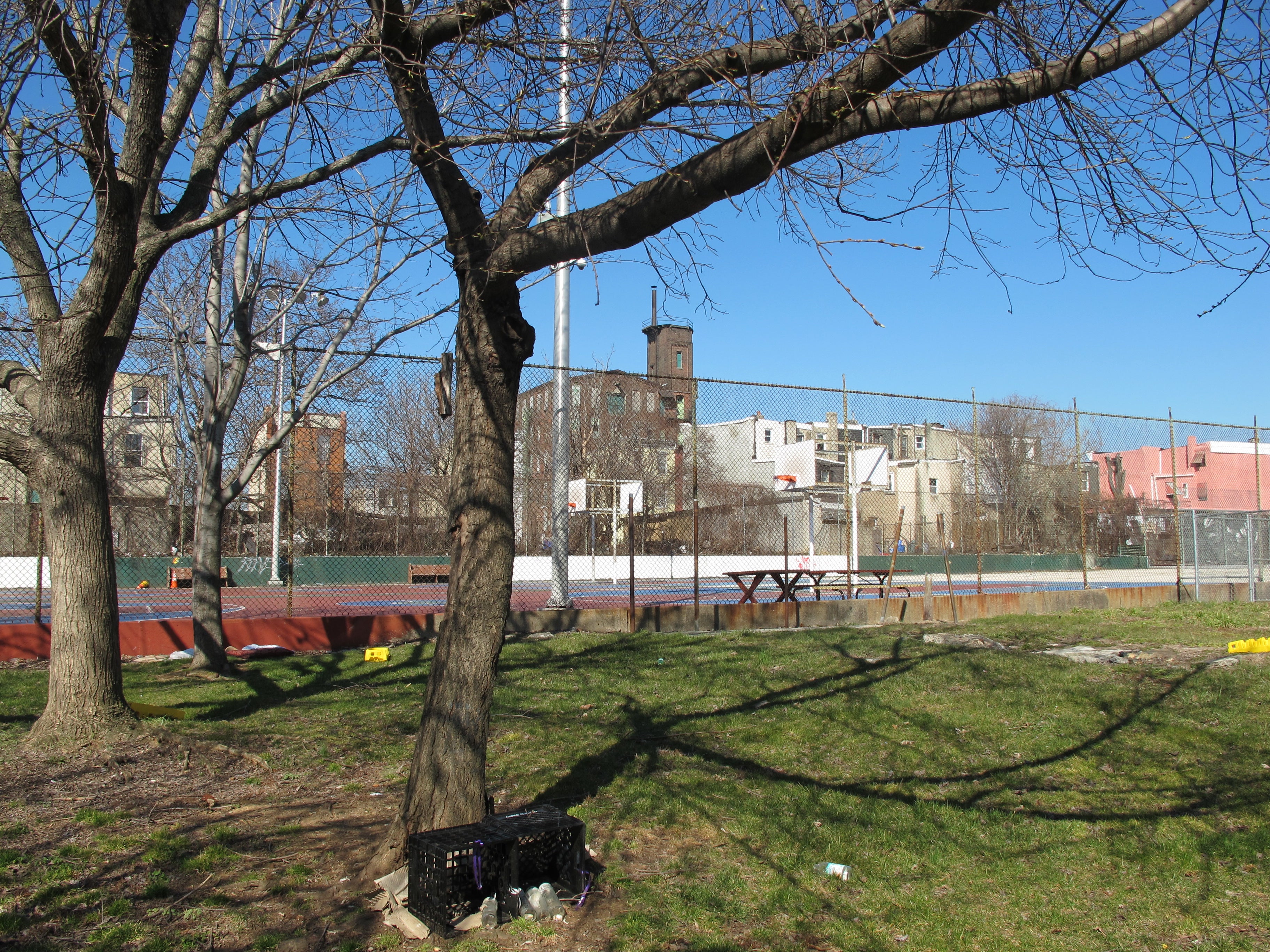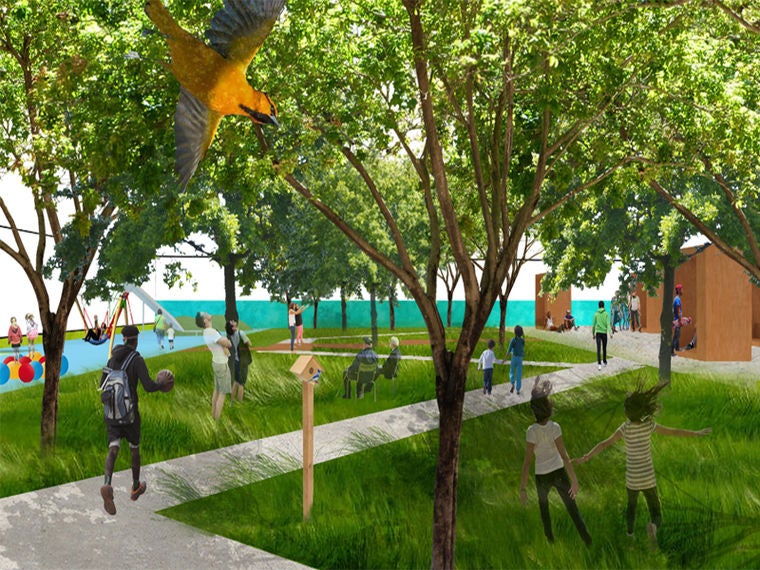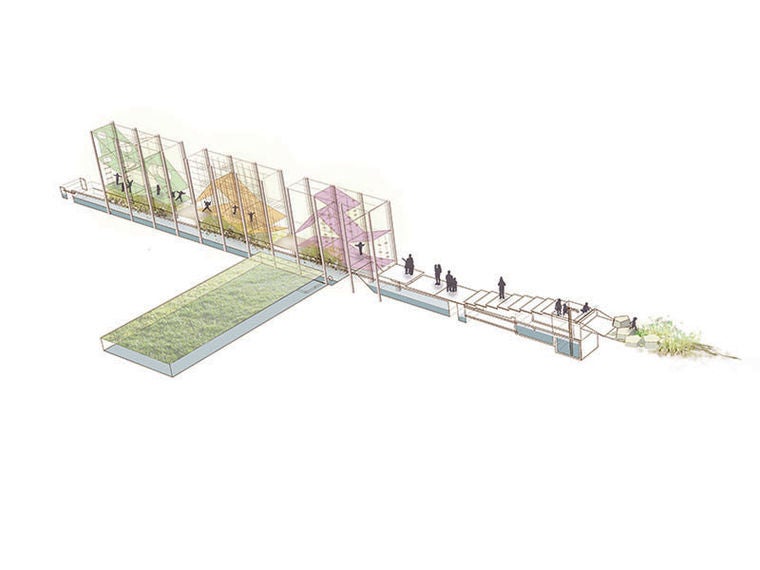Designers compete to put play into Philadelphia’s public spaces

“I’ve recently started to see public spaces in the eyes of children,” said Alexa Bosse, an architect and mother of three-year old twins. “It’s surprising how little opportunities for being outside are really available in the city.”
Play is also on Bosse’s mind professionally as program manager for Play Space, this year’s Infill Philadelphia design competition, convened by the Community Design Collaborative and Delaware Valley Association for the Education of Young Children.
The Collaborative’s Infill Philadelphia initiative’s purpose is to spark creative solutions to thorny urban challenges, and previous iterations have focused on vacant property and green infrastructure.
Play is an underappreciated element of urban life, and it’s also an essential foundation for early childhood development – from social skills and learning, to emotional growth and physical fitness. More than that, play spaces also help create strong public spaces.
“We’ve found that play is a really wonderful activator for community engagement… strengthening community bonds,” Bosse said.
This year’s challenge is all about creating great play spaces that improve early childhood development and bolster community. And it plays into the strand of urban theory that believes the most livable places are created when cities design for their most vulnerable residents – from the elderly to the very young. Often that results in places that are safe, welcoming, and vibrant. Create places for creative play and you build places for families to gather, build relationships, and feel a sense of ownership in shared public spaces.
So how can Philadelphia’s public spaces become more playful?
The Play Space competition invited interdisciplinary teams to explore ways to infuse three publicly owned sites with new opportunities for play, through implementable designs that are responsive to community needs.
The competition sites this year are an aging but well-used library in Cobbs Creek, a mid-block recreation center in Norris Square, and an early childhood education center in Mill Creek. Each site offers basic amenities to build upon and a community ready to support and steward any improvements. These sites were picked because they are in low- to moderate-income neighborhoods with a lot of children but limited opportunities for outdoor play.
Play Space attracted 40 teams from five countries. In February, an expert jury selected three finalists for each of the three sites. Those nine teams will go through tiered judging, including a round of community judges, and make their final pitches before an expert jury at next Wednesday’s awards ceremony.* A winner will be picked for each site and will receive a cash prize of $10,000.
Here’s a look at each site and conceptual drawings from the nine finalists:
Site: BLANCHE A. NIXON/COBBS CREEK BRANCH, 5800 Cobbs Creek Parkway
Finalists: Neighborhood Playbook / Nixon Park / Play Structure | Story Structure
The Blanche A. Nixon/Cobbs Creek Branch Library is one of the city’s historic Carnegie Libraries, dating from the early 20th century. It sits on a triangular, sloped wedge where Baltimore Avenue and Cobbs Creek Parkway meet. The challenge here is to find ways to make the half-acre site serve as an outdoor reflection of the library as a vital community hub, by welcoming gatherings and offering areas for outdoor play and recreation.
Though the library is a few blocks from the Cobbs Creek Trail, community feedback revealed that families aren’t using this trail much. The library, by contrast, is heavily used year round.
This site presents an “opportunity to connect play to literacy… connect neighbors to the natural world,” said Bosse.
For the Free Library, Bosse added, adding a play space is new turf, but one they’re excited about because it’s a chance to extend library life outside and connect with neighbors.
Site: Waterloo Recreation Center, 2502-12 North Howard Street
Finalists: Community Gifts / Reclaiming Recreation / Waterloo Rebosante
Waterloo Recreation Center in Norris Square is a midblock rec center with a pool, basketball courts, and a small playground. This rec center has been closed, and revived at least twice by community-driven efforts, most recently in 2015 by the community group MIMIC (Men in Motion In the Community). Mimic uses Waterloo’s old rec building, chases off undesirable activities, and cleaned and painted the playground.
“The pool means Waterloo is heavily used for a few weeks a year, but the rest of the time it is gated,” Bosse said. Mimic keeps the gate locked, but provides keys to childcare centers and schools and open up the gates when they can monitor the site.
“Visibility is low, which is probably the site’s biggest challenge, but it’s in a really resilient community that is ready to have events there… and make it more of a gathering space.”
Site: Haverford Bright Futures, 4601 Haverford Avenue
Finalists: Bright Futures Chutes and Ladders / Co-Play at Haverford Bright Futures / Embrace Past Present and Future
Haverford Bright Futures in Mill Creek is an early education center, serving 3- and 4-year olds, that sits in an ocean of lawn. The Haverford Center is set in one corner of the 2-acre site, with classrooms that open to the outdoors.
There is a play structure and concrete pad near the building, but the rest of the 2-acre site is an open lawn.
“It’s large enough and green enough to really incorporate and invite the community in. The school would be willing to do that during non-school hours,” Bosse said.
*WHYY’s Maiken Scott will emcee the Play Space Design Awards on Wednesday, March 16, and PlanPhilly is a media partner.
WHYY is your source for fact-based, in-depth journalism and information. As a nonprofit organization, we rely on financial support from readers like you. Please give today.






















